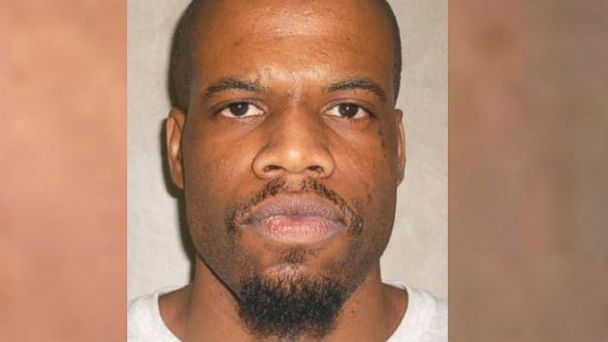New Timeline Suggests Missteps in Botched Oklahoma Execution

Clayton Lockett, seen here in a June 29, 2011 file photo, died April 29, 2014 from a heart attack following a botched execution attempt. (Oklahoma Department of Corrections/AP Photo)
For the first time today, the head of Oklahoma Department of Corrections provided a detailed timeline of the events leading up to the botched execution of inmate Clayton Lockett.
In a letter to Gov. Mary Fallin, Department of Corrections Director Robert Patton asked that all executions in the state be put on hold until a new execution protocol can be developed.
Patton suggested that an "external entity" conduct a full investigation into the circumstances of the execution. In a news conference on Wednesday, Gov. Fallin said that an investigation would be completed by the Department of Public Safety, an agency that reports to her.
Lockett died of a heart attack on April 29, after officials called off his planned execution by lethal injection, citing a collapsed vein. Lockett had been on death row for the murder of Stephanie Neiman.
The timeline provides new details into Lockett's death, including the fact that a phlebotomist (someone trained to draw blood) examined Lockett's arms, legs and feet and was unable to find "a viable" point of entry. According to the timeline, a doctor then examined Lockett's neck and groin area and a "sheet was used to prevent witness viewing of the groin area."
Madeline Cohen, who represents death row inmate Charles Warner, whose execution has been stayed, released a statement today critical of the actions by the Department of Corrections.
"As the Oklahoma Department of Corrections dribbles out piecemeal information about Clayton Lockett's botched execution, they have revealed that Mr. Lockett was killed using an invasive and painful method - an IV line in his groin. Placing such a femoral IV line requires highly specialized medical training and expertise," she said.
She accused the state of trying to "whitewash" the situation.
More details from the timeline:
-Warden Trammell begins the execution at 6:23 and by 6:33 the doctor checked Lockett for consciousness and the offender was unconscious. By 6:33 all the drugs had been administered intravenously. By 6:42 the shades leading to the witness room were lowered and the phlebotomist and doctor checked the IV.
-6:44-6:56 the doctor reports that the blood vein had collapsed and the drugs "had either absorbed into tissue, leaked out or both." The warden called the director. The director asked a series of questions and was told that there was a faint heart beat and that Lockett was unconscious.
-6:56 the Director "calls off the execution under authority granted by the governor."
-7:06 Doctor pronounced Lockett deceased.
The timeline details that earlier in the day Lockett had to be restrained with an electronic shock device. He was also found to have a self-inflicted laceration to his right arm. He refused visits from his attorneys.
Patton writes that "while I have complete confidence in the abilities and integrity of my Inspector General and his staff," he believes the "report will be perceived as more credible" if "conducted by an external entity."
Alex Weintz, a spokesman for the governor, said today that the state will not proceed with any executions until the Department of Corrections protocols can be reviewed and updated.
"The governor's office can grant a stay of up to 60 days to support that effort, " he said
"However, DOC Director Robert Patton has recommended an indefinite stay be requested from the Court of Criminal Appeals while the review process and any additional training occur. That is a request that would be made by the Attorney General. If he chooses to make that request, Governor Fallin would support him."